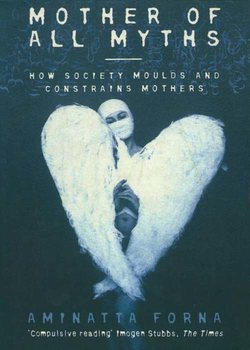Читать книгу Mother of All Myths - Aminatta Forna - Страница 10
Conclusion
ОглавлениеSo, in brief, that is how motherhood came to be as it is today: one of the most natural human states and yet one of the most policed; the sole responsibility of women; not simply a duty but a highly idealized calling surrounded by sentiment. Matters were bad enough for Victorian mothers, but they were set to become even worse during the twentieth century as science, psychology, politics and debates surrounding gender pushed the motherhood myth to its limits and beyond.
Viewing motherhood through the lens of time reveals details that are lost up close. Let’s take the current debate over whether it is psychologically damaging for children to be placed in daycare, specifically the idea that work and good mothering are incompatible. During the Industrial Revolution changes to the system of work meant that women could not work outside the home easily as well as being responsible for family life within it. After the Second World War, when the government needed women to give up the jobs they had held during the war period for the men returning from fighting, it was said that women should not combine work and motherhood; the justification for that, as we shall see, was provided by psychologists in the second half of the twentieth century who claimed (and continue to claim) that children are damaged by their mothers’ absence, even for a few hours, at work.
Rousseau, who incidentally put five of his own children into foundling homes, thought that caring for children was solely the job of women and blamed them alone for the plight of eighteenth-century French children. He argued that education and ambition distracted women from their basic function. So did the Victorians. Today, the legacy of those ideas continues to be reflected in attitudes to ‘career women’ who choose not to have children and mothers who work.
An historical perspective makes us redefine our most basic assumptions about human nature and motherhood. What seems ‘natural’ in one period appears unnatural in another. We would never want to return to treating children as they were treated in the eighteenth century, but it is interesting to speculate how those mothers who had so little time for or interest in their offspring, and who regarded breastfeeding as unpleasant and motherhood an unavoidable bore, would view the Victorian woman to whom motherhood was (expected to be) everything? Elizabeth Badinter remarks:
Mother love has been discussed as a kind of instinct for so long that a ‘maternal instinct’ has come to seem rooted in women’s very nature, regardless of the time or place in which she has lived. In the common view, every woman fulfills her destiny once she becomes a mother, finding within herself all the required responses, as if they were automatic and inevitable, held in reserve to await the right moment.23
After her Odyssey into motherhood in times past, Badinter casts doubt on the notion of any kind of universal, predictable and long-term ‘maternal instinct’ at all. Indeed, the term has now fallen out of use among professionals, be they psychologists or scientists, but presumptions about the biological make-up of women are nevertheless central to the discussions about how women carry out the duties of motherhood and what those duties actually are. A popular view of maternal behaviour includes a woman’s sole responsibility for an infant right through to adulthood, and that is an idea that historical evidence simply does not sustain.
In the past many people knew, or thought they knew, why they had children. It may have been because they could not prevent conception, or because they needed extra hands to work the looms, or to care for them when they grew old, or because they had been instructed to ‘go forth and multiply’. Nowadays those reasons appear redundant. In the context of modern times, children are as likely to be the product of our emotions – desire. passion, altruism, selfishness, love, boredom and vanity – as much as any deeply-rooted, biologically-impelled compulsion. Fuelling the modern obsession with motherhood are our efforts to construct a new rationale for it. Until we find one that is complex and subtle enough to satisfy us, we will continue to build myths around motherhood.
The final lesson of history, on which this chapter must conclude, is that mothering has varied over time. The style of mothering which we have inherited today, with its roots in the nuclear family, was fashioned in a particular way at a specific time in history out of necessity and expediency. The separate elements consist variously of genuine concern at the abandonment of children, a less wholesome view of the nature and the place of women (and of men) and a specific economic context. By coincidence and by design these elements intertwined to produce what we now think of as ‘traditional’ motherhood. The emphasis on romantic motherhood in the Victorian era would eventually give way to the new century and suffragist demands for the vote and women’s liberation. For women, that sense of freedom would prove short-lived with the massive revitalization of the motherhood myth as the twentieth century moved forwards.
